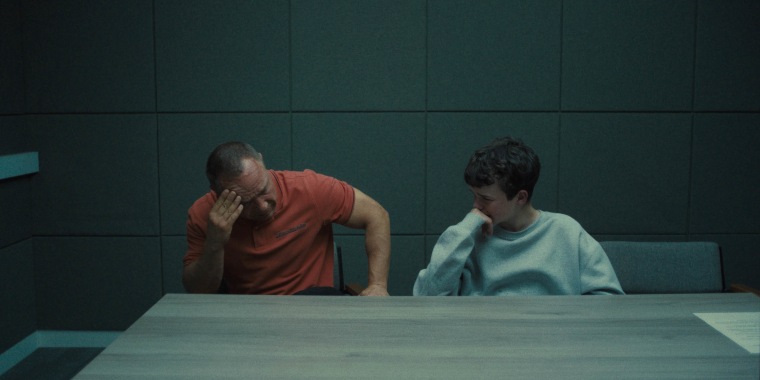
Is ‘Adolescence’ Inspired by Real Events? Insights from the Creator
Netflix’s latest sensation, “Adolescence,” explores the aftermath of 13-year-old Jamie Miller’s (Owen Cooper) arrest following the tragic murder of a female classmate.
Critics deem “Adolescence” as “utterly flawless” and a gripping, difficult-to-watch portrayal of the challenges and dangers that young people encounter on the internet.
The drama unfolds quickly. Just three minutes into Episode 1, police force their way into what appears to be an ordinary home in England, weapons drawn.
As the officers pass Jamie’s parents — Manda Miller (Christine Tremarco), collapsing in her bathrobe, and Eddie Miller (creator Stephen Graham) — they apprehend Jamie, still cocooned in his bed covers.
Jamie, appearing quite youthful, asserts his innocence, but the police inspect the house for evidence, suggesting he may be capable of a horrifying crime.
What crime is Jamie accused of? And what could have driven him to it? Below, uncover the inspiration behind this compelling narrative.
Is ‘Adolescence’ based on a true story?
Stephen Graham, co-creator of the series and actor portraying Eddie Miller, shared with Netflix’s Tudum that a series of recent stabbings involving young boys inspired the story.
“There was an incident where a young boy (allegedly) stabbed a girl,” Graham recounted. “It appalled me. I wondered, ‘What is happening in society when a boy commits such a violent act? What triggers this?’ This happened repeatedly, making me want to shed light on it and ask, ‘Why is this occurring? What’s the underlying issue?’”
For instance, fifteen-year-old Elianne Andam was tragically stabbed to death in London in September by Hassan Sentamu, then aged 17. Sentamu received a minimum 23-year prison sentence according to a court ruling from March.
Graham explained that one of his aims with the show was to delve into, “What is happening to our young men nowadays, and what types of pressures are they encountering from their peers, the internet, and social media?”
“These challenges are as significant for kids here as they are worldwide,” he continued during his conversation with Tudum.
Netflix
Graham mentioned to Rolling Stone that when he views reports of youth engaging in violence in the news, he often feels that parents should share some responsibility.
Thus, he aimed to craft a narrative where the crime is clearly not a result of the parents’ actions.
“I pondered, ‘What if it’s not the parents?’ I envisioned the father as a diligent man, reminiscent of those I grew up with, who worked from dawn until late at night, Monday through Friday,” he explained to the publication.
“I wanted to avoid portraying him as an abusive father. Similarly, we depicted the mother as a manager at John Lewis. Let’s eliminate the typical stereotypes and focus on what’s really happening with the boy in this story.”

Netflix
Rather than attributing the influences to his parents, it’s the internet, alongside certain radical factions, that shape Jamie’s experiences. This perspective stemmed from observing his son’s online interactions and friendships.
“It was about recognizing the influence some individuals can exert over our children, often without our awareness,” he said.
Graham recounted how his son shared a workout video with him. A few days later, the algorithm began showcasing the same creator, who was now promoting “misogynistic opinions and views.”
“I could choose to dismiss it, but what if I were a 13-year-old boy with a difficult relationship with my dad, and I encountered someone who seemed to embody all my aspirations — a luxury car and wealth? If that person shared dangerous views, wouldn’t we need to be cautious about what ideas are being transmitted to young minds?”
As for the overall project, Graham expressed to Rolling Stone that he feels “immensely proud” to have contributed to it.
“I sincerely hope it sparks crucial discussions,” he remarked.



